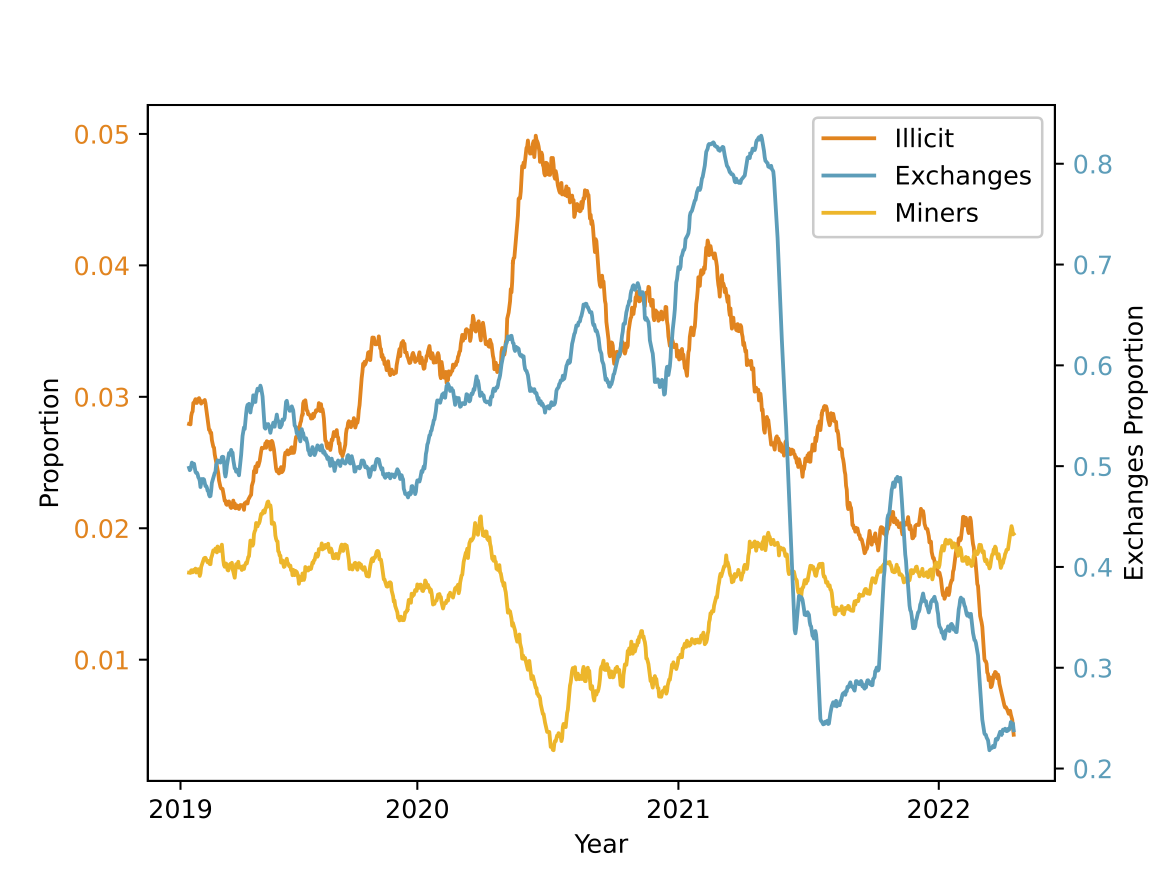Bitcoin Community Structures and the Presence of Strategic Interactions
This is the main chapter of my thesis. Using the transactions between addresses, I apply network econometrics to analyse the community structures of Bitcoin during the last 3 years. Characterising the network from this clustering perspective provides a contribution to the existing literature. Furthermore, I establish the presence of strategic interactions at the community level.
Applying existing methods, I take the raw transaction data and build a graph at the user level, aggregating addresses that belong to the same agent. With the use of a modularity optimising algorithm, subgroups of agents that form clusters of activity are identified, forming a community. Cross-checking this with a database of known agent types, we can assign activity types to communities.
We characterise communities using network statistics, for example, using the Kolmogorov-Smirnov test on degree distributions as a measure of type heterogeneity. From this we can highlihgt that exchanges have a similar in-degree distribution to black markets, but different out-degrees. Testing for strategic interactions following the work by Pelican and Graham (2022) we establish the presence of strategic interactions between communities. This result is key for policy makers as disruptions in one part of the network can lead to the break-down of ties elsewhere.
